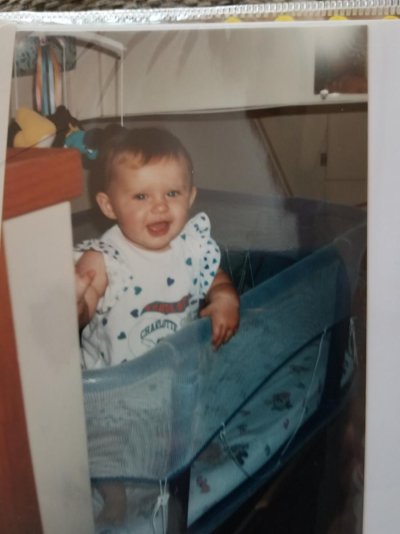I had a boat in Los Angeles. When I bought it, it had fan-forced electric wall heaters similar to ones you'd buy at home depot or lowe's for home use in the salon and aft cabin. From the looks of them, they were installed in the 1970s or 1980s. They still worked fine in all respects, though.
Eventually, I added a reverse-cycle marine HVAC system to the boat for the hot summer days. I also installed a panel heater (
https://www.amazon.com/Amaze-Heater-250SS-HG-Electric-Mounted) and a line-level thermostat in the forward cabin, just as an experiment.
So, I had plenty of options. But, as it turns out here is how it broke down for me:
-- Marine reverse cycle HVAC: Great for cooling the boat on hot summer days.
-- Electric wall heaters: Preferred solution for the coldest days of the year. Relatively quiet. Could run both off of shore power. Could heat the boat even on the coldest days. But, of course, electric space heaters are fire concerns w.r.t. combustibles nearby, etc.
-- Panel heater in forward cabin: It couldn't change the temperature in the cabin much or quickly, but if turned on in the evening could keep it from dropping much overnight. I'd say it could hold it about 10 degrees above outdoor temperature and slow the fall more than that. It was nice, though, in that it was dead silent, took up virtually no space, wasn't a fire or burn hazard, and was low enough power to run for guests all nice off of the inverter. I might go with the 400W if I'd do it again.
But, my favorite option of all was....electric blankets. At a 10/10 setting they would take about 150-200W each, depending upon which one. But, in reality, I set them for 3-4 and they would take only 45-65W each. With that little power consumption, i could run 3 of them all night off of the inverter for me and guests and still have enough energy left in the batteries to get me through the day (I'd run the inverter to charge up at dinner time every night). No problem.
If you are wondering why I didn't use the marine AC unit to heat, it is just because it was louder than the electric heaters, so I preferred them. And, I guess I always worried about it sucking in some trash unattended overnight (even though it was a newer one with logic to shut itself down in this case).
So, in the end...for cooling I used the reverse-cycle AC unit. For warmth on cool nights, I used electric blankets (even a throw for the settee). And on the very, very few really cold nights, I used electric fan-forced wall heaters. I didn't really use the marine unit to heat, except occasionally just to prove it still could. The panel heater was a novelty.
In Florida, where I am now, a lot of people have portable home units in their boats to fight the humidity and keep things cool, while avoiding the risks I mentioned w.r.t. marine units in floridas very shallow slips. Then, they switch over to the marine units when underway.
As for how to how to handle a new born...I can't help you there. But, maybe some of this applies in some way.

